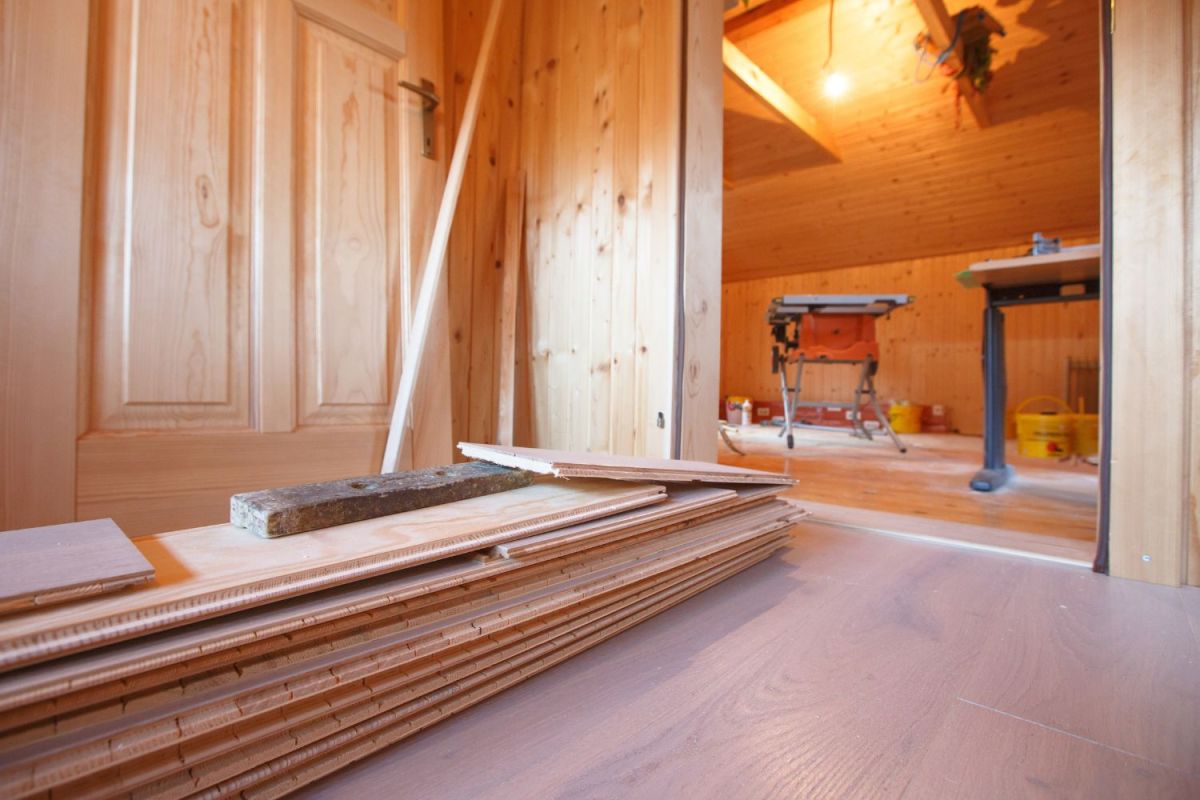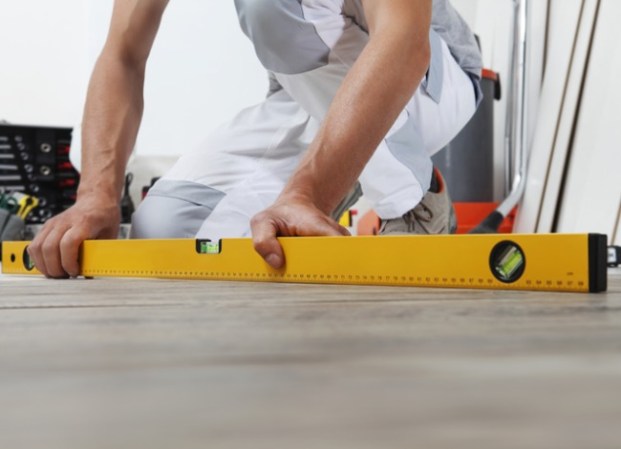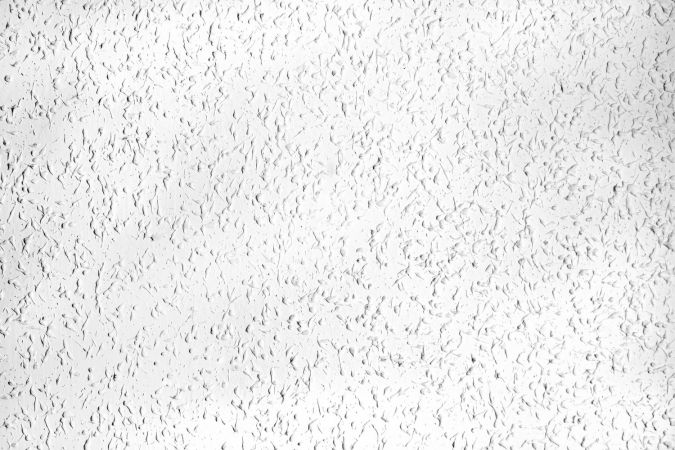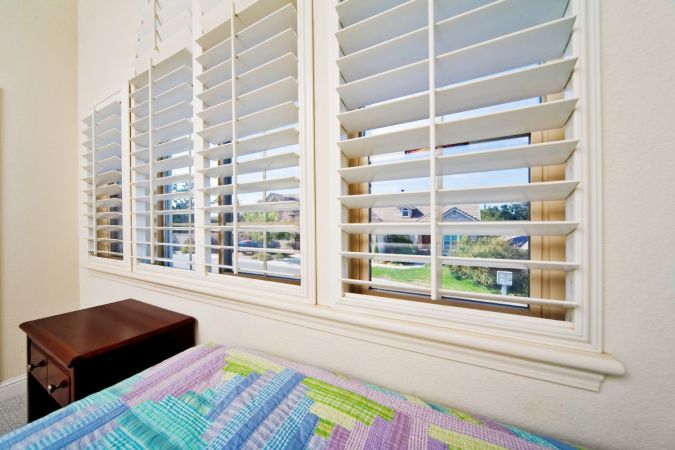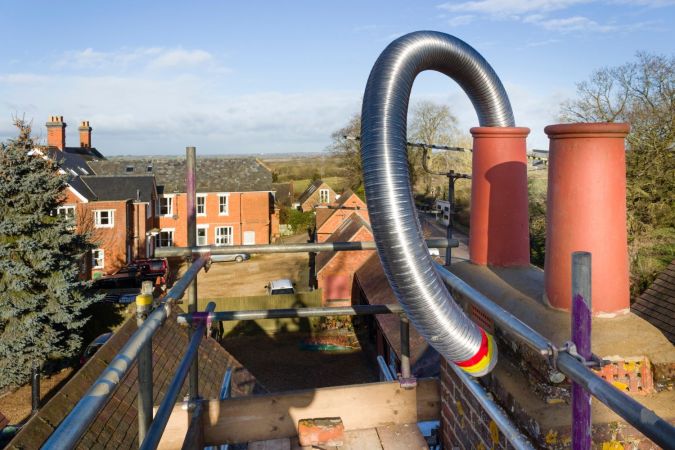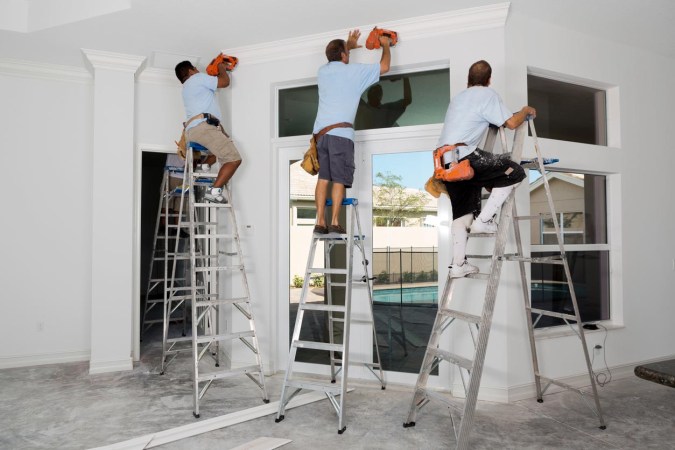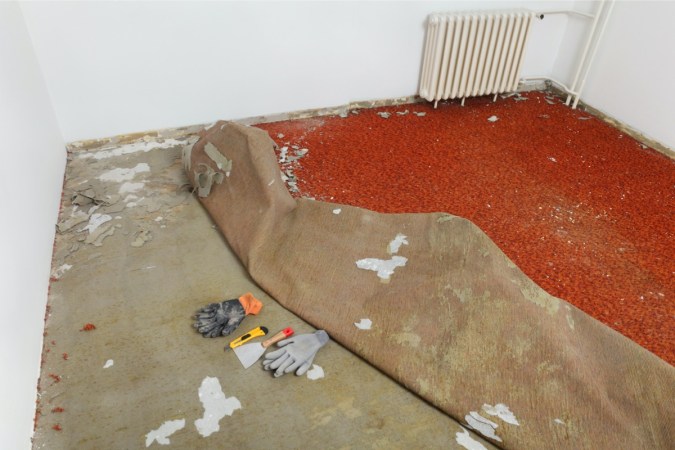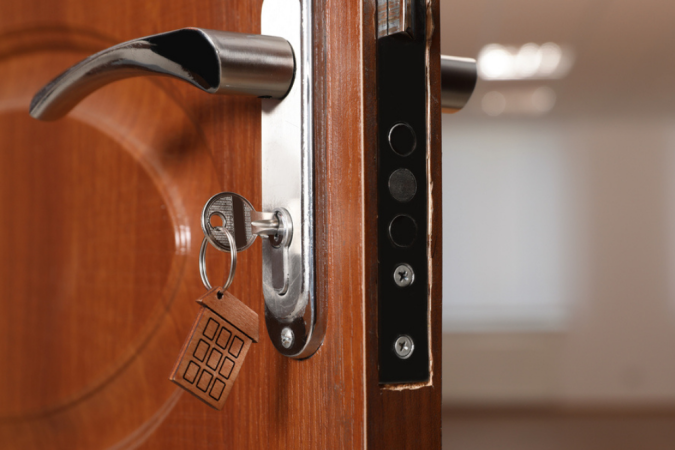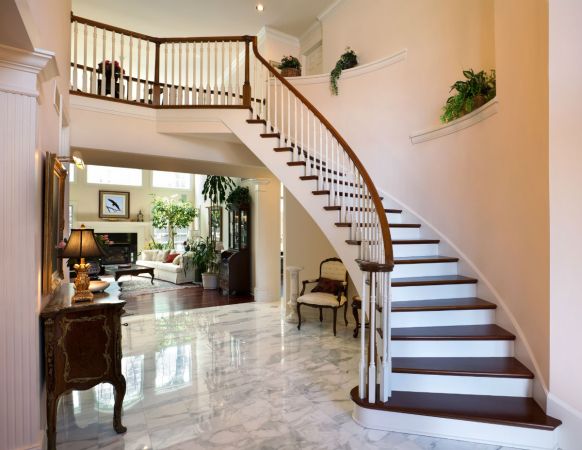We may earn revenue from the products available on this page and participate in affiliate programs. Learn More ›
- Typical Range: $428 to $2,978
- National Average: $572
Subfloors are boards installed a layer or two below floors to provide support. Over time, they can become loose, causing squeaky floors, or warp and degrade from water damage. For homes where this is the case, the subfloors likely need to be replaced. According to Angi and HomeAdvisor, the cost to replace a subfloor ranges from $428 to $2,978, with a national average of $572.
How much does it cost to replace a subfloor? That depends mostly on the square footage of the subfloor area that needs to be replaced and the type of subfloor material being installed. There are several other factors to consider as well, like labor costs along with potential floor joist replacement and underlayment installation. This guide will detail all of these cost factors, as well as the reasons a subfloor might need to be replaced and questions to ask when looking for the right professional for the job.
Factors in Calculating the Cost to Replace Subfloor
Since subfloors are usually out of sight, out of mind, it can be hard to know what factors affect the cost to replace them. Subfloor replacement cost depends on the size of the room, the subfloor material chosen, the location of the subfloor, and labor hours.
Room Size
With the average cost to replace subfloor materials ranging from $1.30 to $12 per square foot, the larger the room size, the larger the cost. Replacing the subfloors in a small bedroom might only cost around $336, while replacing the subfloors in an entire basement could cost as much as $2,250. A larger room will require more subfloor materials and labor hours to complete the job.
Subfloor Material
There are several different types of subfloor materials available on the market, each at a different price point. For example, per square foot, basic plywood subfloors cost around $1.50 per square foot, while Advantech engineered wood subfloors cost from $4.25 to $9.25. Advantech subfloors offer better durability and moisture resistance compared to plywood, hence the higher price point. Just because a subfloor material is more expensive, however, doesn’t mean it is better to use in all situations and homes. Homeowners will want to choose a subfloor that makes the most sense for their project’s needs and budget.
Subfloor Location
Subfloors are installed everywhere flooring is installed—in basements, bathrooms, bedrooms, and so on. The cost to replace subfloor plywood in an average-size bedroom of 224 square feet is around $336. Replacing subfloors in a 220-square-foot living room usually costs $330, while the price is similar for a kitchen at $263 to $300 for a 175- to 200-square-foot space. The cost to replace the subfloor around a toilet and in a bathroom that measures 115 to 220 square feet will run between $173 and $300. For a 1,500-square-foot basement, homeowners can expect to spend about $2,250 to replace the subfloors with plywood, while the cost to replace the subfloor in a mobile home is between $2 and $2.75 per square foot.
Labor
The labor cost to install subfloor material makes up a large portion of the overall project cost. Installers will likely charge between $25 and $30 per hour to remove and replace subflooring. Replacing subfloors in a small area will take only about 4 hours, but a more complex project with a greater surface area could take up to 4 days or even longer. Labor is required not only to remove and replace the subfloors but also to prepare the work space and move furniture. Homeowners may be able to save on the total project cost by completing some of the prep work themselves.
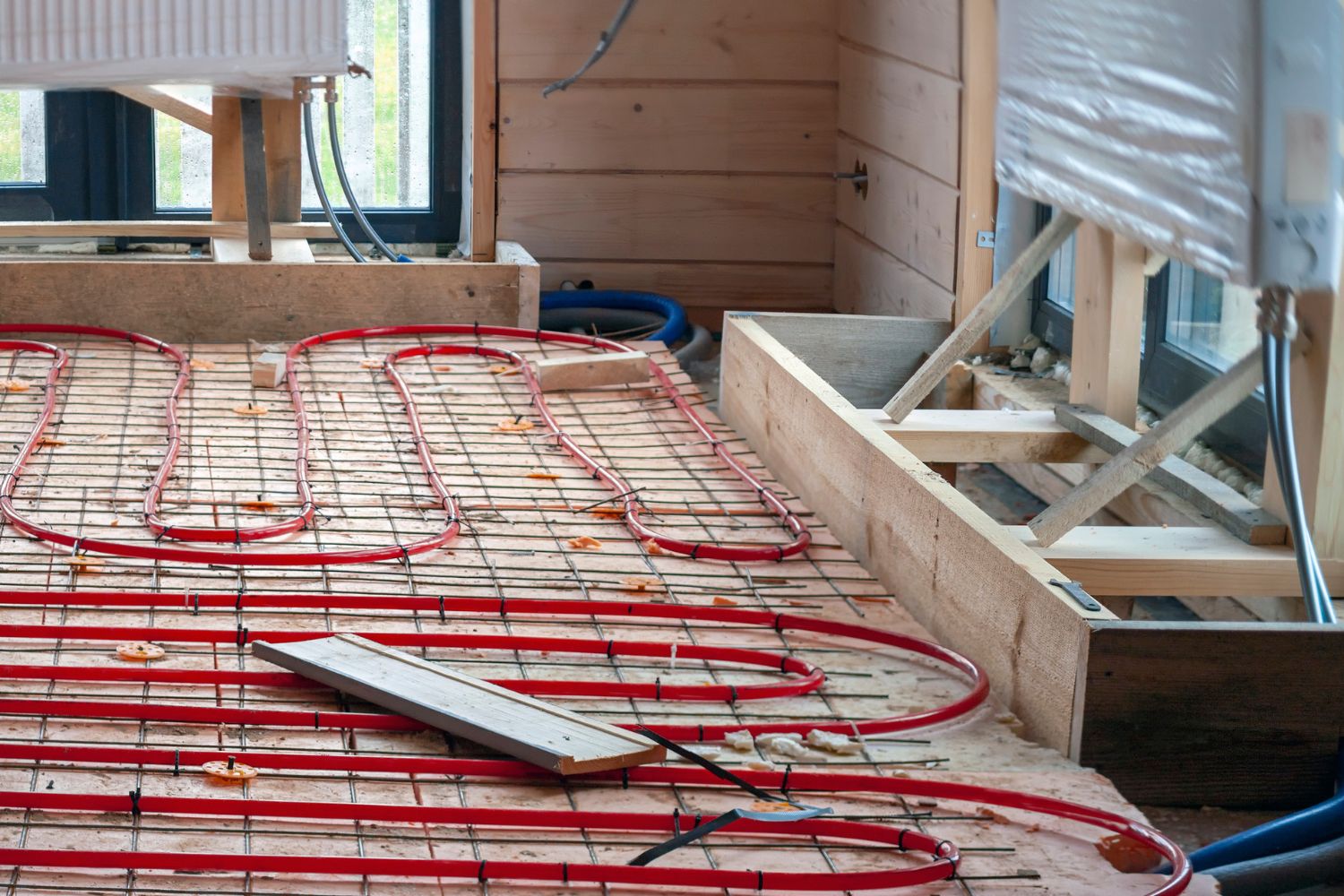
Additional Costs and Considerations
In addition to the aforementioned cost factors, most homeowners will want to think about other factors that might affect the cost to replace floor joists and subfloor materials.
Repair vs. Replacement
If the majority of the subfloor is in decent shape, the homeowner could consider repairing the damaged parts rather than replacing the entire subfloor. The cost to repair water-damaged subfloors or otherwise broken subfloors ranges from $1.66 to $5 per square foot. This is less expensive than most subfloor replacement costs, which run from $1.30 to $12 per square foot. If just a small section of floor is damaged, repair is certainly a feasible option, but when a large section has extensive damage, replacement is typically the best long-term option. The choice between subfloor repair cost and subfloor replacement cost is one the homeowner will need to make with their contractor depending on the state of their current subfloor and their budget.
Old Subfloor Removal
In most cases, the existing subfloor must first be removed before the new subfloor can be laid down. While this cost is likely already accounted for in the overall project cost, the labor cost to remove subfloor is around $28 to $30 per hour. This price includes removing and disposing of all the old subfloor material. Old subfloor material will need to be completely removed before the new subfloors are installed.
Floor Joist Replacement
When homeowners are replacing subfloors, it may become apparent that the floor joists also need to be replaced. Floor joists are the structural components that support a flooring system; each one costs between $100 and $2,000. Homeowners will need to replace floor joists if they are rotting, have moisture damage, are uneven or sagging, or are creating cracks in interior drywall. Since floor joists provide integral structural support for a home, it is important for homeowners to keep them in good shape.
Underlayment Installation
Underlayment is another flooring layer that is required for certain types of flooring material, like hardwood and laminate; it provides an additional layer, either for waterproofing, cushion, or sound absorption, and can help remove the roughness from the subflooring layer. Installation tends to cost between $0.42 and $0.47 per square foot. Underlayment is not always necessary, so homeowners will want to speak with their contractor to determine whether their project needs to include it in their planning.
New Flooring Installation
If subflooring material is being replaced, there is a good chance the previous flooring material will need to be replaced too. On average, flooring installation costs $12.50 per square foot: carpet costs just $4.50 per square foot, hardwood floors cost as much as $14 per square foot, and the cost to install tile flooring ranges from $1 to $30 per square foot. The total new flooring installation cost depends on the type of flooring and the size of the room. Labor costs also make up a significant portion of the price.
Customizations
There are a few customizations available that homeowners may need to factor in when determining the cost to replace subfloors. Warmboard, a specific type of subfloor, is made to be installed with radiant floor heating. Homeowners who plan to install this type of in-floor heating will need this customized subfloor. The size of subfloors can also be customized. Homeowners can custom-order almost any size necessary for their specific project, and they can also request various add-ons, like cushioning, waterproofing, or sound dampening. Any of these customizations will increase the cost of replacing subfloors beyond the cost of the basic offerings.
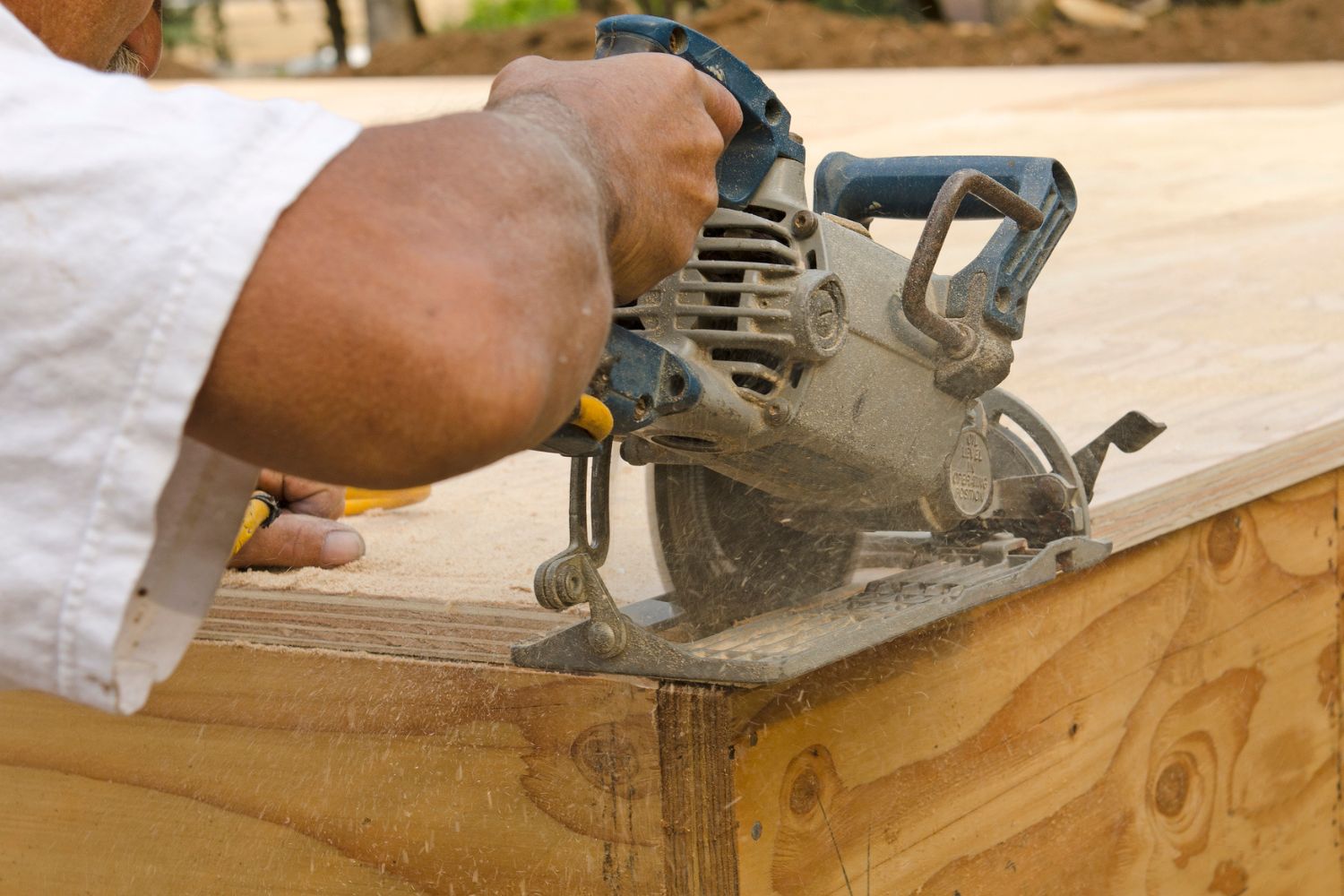
Replacement Cost by Type of Subfloor Material
When it comes to subfloor materials, there is a fairly large selection for homeowners to choose from. Some are more basic and low-priced, while others offer more features, like moisture resistance and insulation, at a higher cost. The conditions of a home also play a role in the type of subfloor material homeowners will want to select. In general, all subfloor material types will need to acclimate to the home for a few days before installation.
Plywood
Plywood is generally the most popular subfloor option, as it is is readily available and cost-effective, costing an average of $1.50 per square foot. Usually, plywood used as a subfloor is ¾-inch thick and has a tongue-and-groove edge that interlocks each board. Plywood is very versatile, as it can be fastened with glue, nails, or screws and is relatively easy to install. The downside is that it is not the most durable option, but it will still last a very long time.
Treated Plywood
As opposed to a standard plywood material, which is untreated, treated plywood is either fire-retardant or pressure-treated for added protection. Pressure-treated plywood undergoes a chemical process that improves its durability. Fire-retardant plywood also undergoes a chemical process to become noncombustible. On average, treated plywood subfloors cost $2.81 per square foot. As are plywood subfloors, treated plywood subfloors are typically ¾-inch thick with a tongue-and-groove system.
DRIcore
DRIcore is an engineered type of subfloor that costs about $1.65 per square foot. The material combines plastic on the base and oriented strand board (OSB) on the top. OSB is made of thin strips of wood bonded together with resin. The plastic base of DRIcore makes it moisture-resistant. For this reason, DRIcore is a long-lasting subfloor option used most often in areas prone to moisture, like basements, kitchens, and bathrooms.
Amdry
Another moisture-resistant subfloor is Amdry, which costs around $3 per square foot. Amdry is also insulated, which makes it the perfect subfloor for concrete slabs in basements. Amdry’s ability to insulate against heat flow is superior to other types of insulated subfloor. Although Amdry subflooring requires special connectors between each piece, it comes in larger panel sizes to make installation faster.
Barricade
Barricade subfloors do it all: They offer sound dampening, floor heating through insulation, and moisture resistance. For all of these features, Barricade subfloors cost between $1.75 and $2.25 per square foot. Barricade provides a variety of subfloor products, each compatible with a specific flooring type. For example, if the homeowner plans to install laminate flooring, they will also want to install the laminate-compatible subfloors from Barricade.
Warmboard
Warmboard subfloors are made to be installed over radiant floor heating coils and cost about $7 per square foot. The material can withstand direct heat from hydronic heating systems. This type of subfloor and the accompanying heating system are often installed in basements and bathrooms for added warmth underfoot.
Delta-FL
Delta-FL subflooring costs about $1.30 per square foot. This underlayment is a dimpled plastic membrane that is typically installed beneath plywood subfloors; it creates an air pocket and pressurizes to prevent excess humidity or dryness in the space. Additionally, the Delta-FL layer offers some extra cushioning underfoot.
Advantech
Advantech is an engineered wood subfloor system that costs $4.25 to $9.25 per square foot. These subfloor panels feature a tongue-and-groove locking system that makes installation easier and provides long-term stability. The material is OSB (oriented strand board) that has been engineered to offer superior durability, strength, and moisture resistance.
OSB
OSB, or oriented strand board, costs around $1.40 per square foot, or 10 percent to 20 percent less than plywood. While OSB is an engineered material, it is made to be economically efficient. Thin strips of wood are bonded together with a resin; the material is heavier than plywood and has ample structural integrity. The downside is that OSB easily warps if it comes in contact with moisture, so homeowners will need to make sure it’s securely protected from any water sources.
Tyroc
Tyroc subfloors are fairly new to the market. At $5.50 to $10 per square foot, Tyroc is an environmentally friendly subfloor option. It is made with organic and recycled materials, including recycled tires, that allow moisture to move freely throughout and find the nearest drain. The material prevents air from building up underneath, reducing the potential for mold or mildew growth.
Concrete Slab
A concrete slab can be used as a subfloor in some circumstances. For $6 to $12 per square foot, the concrete that makes up a home’s foundation can act as the subfloor. Depending on the particular conditions, a homeowner may need to install a moisture barrier or insulation before installing flooring over it. Concrete is very durable, and flooring such as tile or vinyl can be installed directly on top. For carpet or hardwood floors, a separate subfloor material is required.
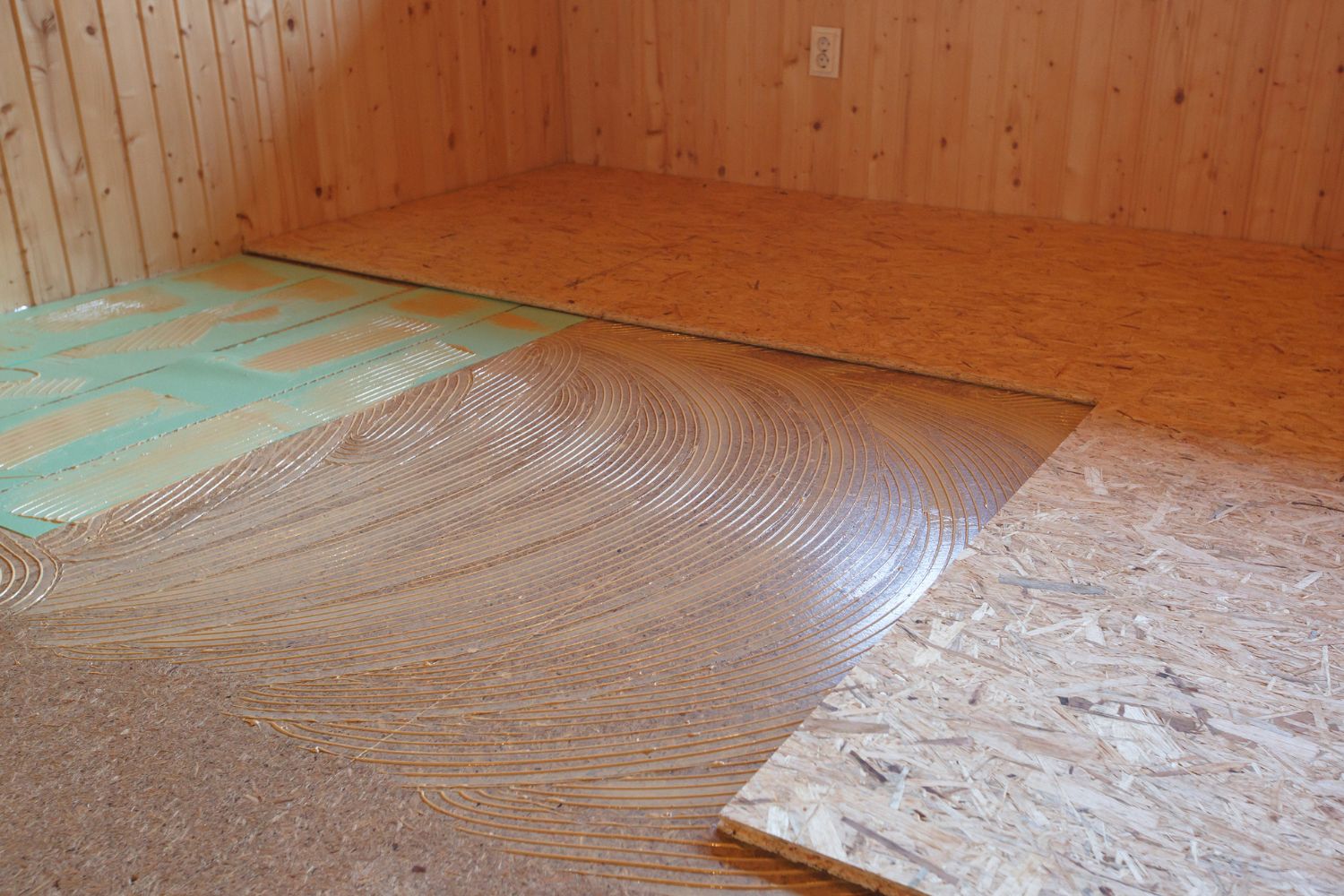
Do I Need to Replace My Subfloor?
It can sometimes be difficult for homeowners to pinpoint the source of a flooring problem in their home. If the homeowner notices any of the issues that follow, the subfloor might be the root cause and need to be replaced.
Squeaking Noise
If the homeowner hears squeaking noises as they walk across the floor, the subfloor is typically to blame. Over time, the fasteners that attach subfloors to the floor joists can loosen. When someone puts their body weight on the floor in the location, the subfloor rubs up against the fastener, causing the squeak. Subfloors that squeak can sometimes be repaired, but replacing them entirely is the best way to eliminate the problem.
Uneven or Springy Flooring
Similar to squeaky flooring, uneven or springy flooring occurs when subfloors become separated from the fasteners. As corners and edges of the subfloor are no longer properly secured, they can spring up and transfer to uneven sections in the floors. If this is a recent problem, the subfloor can likely be repaired with additional fasteners, but over time the board will warp and require replacement.
Cupping Floorboards
If a homeowner notices the outline of a subfloor board or a raised line appearing on their floor surface, this could be a sign the subfloor needs to be replaced. When subfloors are exposed to moisture, the outside edges can begin to rise up while the center of the board remains flat. The cupping edge will begin to raise the flooring in that area. Moisture-damaged subfloors must be replaced to eliminate any mildew, mold, or potential rotting.
Cracking or Popping Floor Tiles
As subfloors move around and settle over time, this movement can cause damage to the floor above. This is most often the situation when floor tiles crack or pop up. It is recommended that homeowners replace both the subfloor and the flooring in this situation to prevent further damage to the rest of the tile flooring.
Musty Odor
A musty odor that can be traced to subflooring is a surefire reason for replacement. Once subfloors are exposed to water, they become a breeding ground for mold and mildew growth. Water-damaged subfloors can also begin to rot, which negatively impacts their structural integrity. Subfloors exposed to moisture cannot be repaired. Each section that has water damage will need to be replaced to avoid any unwanted mold and mildew.
Loose Toilet
If a toilet feels loose and rocks back and forth, an uneven subfloor could be to blame. Subfloors in rooms with a lot of water exposure, like bathrooms, are prone to water damage. They could also simply be worn from age. The cost to replace bathroom floor and subfloor materials can be a little higher than for other rooms due to the intricacies of installation around plumbing.
Subfloor Replacement: DIY vs. Hiring a Professional
Subfloors play a big role in a home’s structure, transferring support from the floor joists to the flooring in each room. For this reason, it is extremely important that subfloors are installed correctly. Subfloors must be level so the flooring above is perfectly level and furniture doesn’t tilt or wobble. Additionally, subfloors must be securely fastened so edges and corners do not pop up over time.
To ensure that subfloors are installed as they should be, homeowners are advised to hire a professional for the job. Most homeowners do not have the tools or skills to know how to install a subfloor properly. The project is also a big undertaking that could limit the rooms homeowners can use in their home. A professional can get the job done in a quick, efficient manner, whereas a DIY project may take weeks or even months to complete.
It is always very helpful for homeowners to have a professional in their corner helping with project decisions. The best flooring companies will help homeowners evaluate their existing subfloors and make recommendations for product types and installation methods. Additionally, some contractors will offer a warranty on their work, so homeowners can have peace of mind with the project.
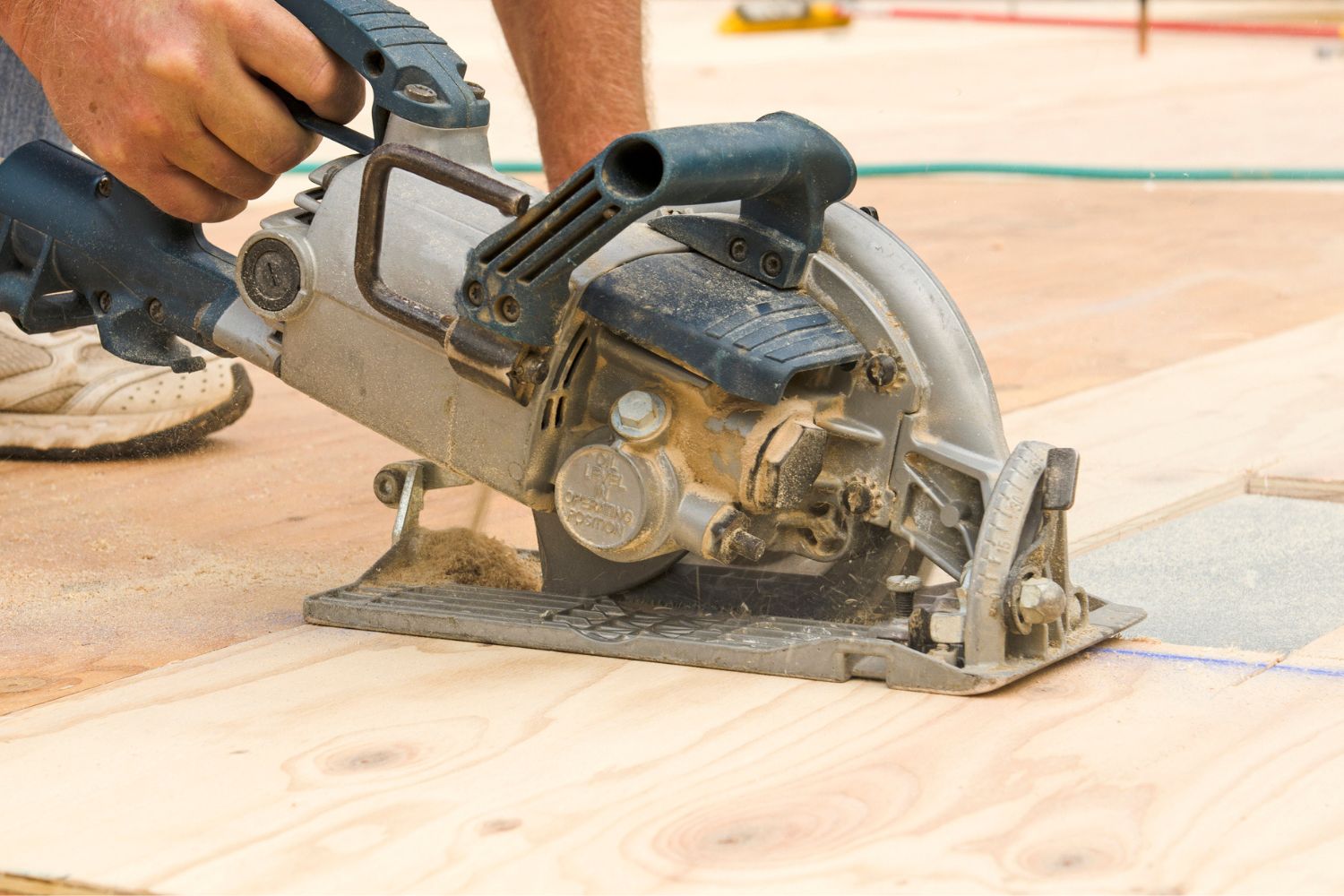
How to Save Money on the Cost to Replace Subfloor
The cost to replace subfloor can add up, especially if a large area needs to be replaced. Before starting a subfloor replacement project, homeowners may want to consider incorporating some of these money-saving tricks to help save on the overall cost.
- DIY the old subfloor removal. For homeowners who have the tools and construction experience, it may be wise to save some money on labor and remove the existing subfloor themselves. Homeowners will want to make sure they already have a contractor hired for the subfloor replacement work so there is not a long period of time when the home does not have floors.
- Request pricing from at least three contractors. With multiple bids to compare, homeowners can make sure they are not overpaying for the work and can choose the best value option. While the cheapest option might seem like the best choice for the homeowner’s wallet, it’s wise to evaluate every aspect of each company, including experience, communication, and reliability.
- Choose a budget-friendly subfloor material. While there is a wide range of costs when it comes to subfloor types, plywood and OSB are often the most suitable and affordable options. Homeowners will want to evaluate their project needs thoroughly and choose the best subfloor material for their project.
Questions to Ask About Subfloor Replacement
While contacting flooring contractors to replace their subfloors, homeowners will want to ask the following questions. This will allow the homeowner to vet each company, gain valuable insight about their process, and feel confident with who to hire to replace subfloor materials in the home.
- Do you offer free estimates?
- Will you provide a written quote and contract?
- Are you licensed and insured to complete this type of work?
- How long have you been in business?
- What kind of training do you offer for your employees?
- Will the work be completed by an employee of your business or by a subcontractor?
- Can you provide references from similar projects?
- What type of subfloor material do you recommend?
- Will this type of subfloor be compatible with the flooring I plan to install?
- How long will the subfloor replacement project take?
- Do you require a down payment, and if so, how much?
- What is the payment schedule, and do you offer payment plans?
- Do you offer a warranty on your work?
- How soon can you schedule the work?
- How can I get in touch with you while the project is in progress?
- Will you deliver the subfloor material in advance so it acclimates to the environment?
- Do you take care of cleanup after the project is complete?
- How will you protect my home from damage during the project?
- How do you handle disputes or disagreements?
FAQs
These frequently asked questions often come up during the process of installing new subfloors. Homeowners can ask each one to become more informed and confident in their decisions throughout the project.
Q. How do you know if your subfloor needs to be replaced?
Some of the signs subfloors need to be replaced include the following:
- floors that squeak when walked on;
- floors that are sinking in certain areas;
- floors that are showing signs of cupping;
- floor tiles that are cracking or popping;
- floors that have sustained water damage.
Q. Will a plumber replace the subfloor?
A plumber can replace subfloors but is generally not the best professional for the job. Plumbers can replace subfloors in a small section if it is related to their plumbing scope of work, but generally they’re not the best professionals for the job. Contractors and carpenters who have the most experience with replacing subfloors are typically the best fit for the job.
Q. Can you replace just part of a subfloor?
Yes, it is possible to replace just part of a subfloor. After fully assessing the damage, the contractor will need to remove the flooring in any areas that are worn or damaged to access and replace the subfloor.
Q. How do you fix a subfloor that has rotted underneath?
To fix a subfloor that has rotted underneath, homeowners or contractors will start by removing all of the old subfloor and any water-damaged material. Once all of the rotted subfloor has been removed, they can measure the area and cut a new piece of subflooring material for installation.
Q. Can I put a new subfloor over the old subfloor?
It is possible to put a new subfloor over the old one, as long as the old subfloor is in good condition. If the old subfloor is at all worn or water damaged, it is best to remove the old subfloor and start with a blank slate. Also, placing a new subfloor on top of an old subfloor does increase the chance of issues with loose fasteners or warping in the future.
Q. Do walls go on top of the subfloor?
Walls do go on top of the subfloor. After subflooring is installed, wall framing and studs are secured on top. Then, drywall and flooring can be installed to finish out the space. If the homeowner is remodeling a space and not building from the ground up, replacement subfloors will go around existing walls.
Sources: Angi, HomeAdvisor, Fixr, Upgraded Home

